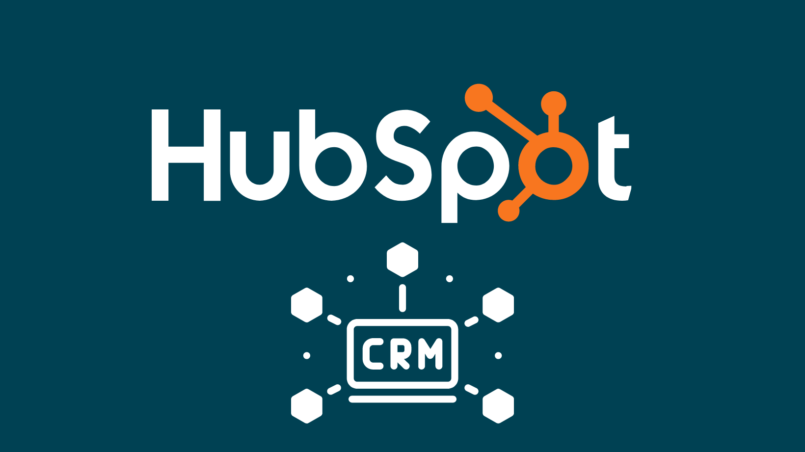Share this
In the digital age, businesses need robust tools to manage interactions with customers and streamline sales processes. HubSpot CRM stands out as a leading solution, offering a range of features designed to enhance customer relationship management. This article explores the functionalities, benefits, and implementation strategies of HubSpot CRM, providing a comprehensive guide for businesses looking to optimize their sales and marketing efforts.
What is HubSpot CRM?
HubSpot CRM is a free, cloud-based customer relationship management software designed to help businesses manage their interactions with prospects and customers efficiently. It provides tools for sales automation, contact management, pipeline management, and detailed analytics, making it a versatile solution for businesses of all sizes.
Key Features of HubSpot CRM
- Contact Management HubSpot CRM allows businesses to store and organize customer information in a centralized database. Users can track contact interactions, including emails, calls, and meetings, ensuring that all customer data is easily accessible and up-to-date.
- Sales Pipeline Management The CRM provides visual sales pipelines that allow users to track the status of deals at various stages. It enables sales teams to prioritize deals, manage sales processes, and forecast revenue accurately.
- Email Integration HubSpot CRM integrates seamlessly with popular email platforms, allowing users to send, receive, and track emails directly within the CRM. It also provides email templates, scheduling, and tracking to enhance communication efficiency.
- Task and Activity Management Users can create tasks and set reminders for follow-up activities, ensuring that important customer interactions and deadlines are not missed. The activity timeline provides a chronological view of all interactions with each contact.
- Lead Generation and Management The CRM includes tools for capturing leads from websites, landing pages, and forms. Users can segment and nurture leads with personalized communication to drive conversions.
- Reporting and Analytics HubSpot CRM offers customizable reports and dashboards that provide insights into sales performance, pipeline metrics, and team activities. These analytics help in making data-driven decisions to improve sales strategies.
- Live Chat and Bots Businesses can integrate live chat and chatbots into their websites to engage with visitors in real-time. This feature helps in capturing leads, answering queries, and providing support instantly.
- Customizable Dashboards Users can create personalized dashboards to track key metrics and visualize data according to their preferences. This flexibility allows for a tailored view of business performance.
- Mobile App HubSpot CRM offers a mobile app that enables users to manage contacts, track deals, and stay connected with their sales pipeline on the go. This ensures that sales teams have access to critical information anytime, anywhere.
- Integrations The CRM integrates with a wide range of third-party applications and services, including marketing automation tools, e-commerce platforms, and customer support systems. This interoperability enhances the CRM’s functionality and allows for seamless workflows.
Benefits of Using HubSpot CRM
1. User-Friendly Interface
HubSpot CRM is known for its intuitive and easy-to-navigate interface. The simplicity of the design makes it accessible for users of all skill levels, reducing the learning curve and enhancing productivity.
2. Scalability
HubSpot CRM is scalable, making it suitable for small businesses as well as large enterprises. It can grow with the business, accommodating an increasing number of users, contacts, and deals without compromising performance.
3. Cost-Effective Solution
HubSpot CRM offers a robust set of features for free, with additional premium options available for businesses needing more advanced capabilities. This cost-effective approach provides value to businesses looking to optimize their CRM processes without significant financial investment.
4. Centralized Data Management
The CRM consolidates customer data into a single platform, eliminating the need for multiple systems and reducing data silos. This centralized approach ensures that all team members have access to accurate and consistent information.
5. Enhanced Sales Efficiency
With tools for automation, email tracking, and task management, HubSpot CRM streamlines sales processes, allowing teams to focus on building relationships and closing deals. The automation of repetitive tasks frees up time for more strategic activities.
6. Improved Customer Insights
The reporting and analytics features provide deep insights into customer behavior, sales trends, and team performance. These insights help businesses understand their customers better and tailor their strategies to meet their needs.
7. Seamless Integrations
HubSpot CRM’s ability to integrate with various applications enhances its functionality and allows businesses to create a cohesive tech stack. This interoperability supports a wide range of business processes, from marketing to customer support.
8. Real-Time Collaboration
The CRM facilitates real-time collaboration among team members, with features like shared contact records, activity timelines, and deal tracking. This ensures that everyone is aligned and informed about customer interactions and sales progress.
9. Customizable Workflows
Businesses can customize workflows to match their specific sales processes and customer journey stages. This flexibility allows for a tailored approach to CRM that aligns with business objectives and operational needs.
10. Mobile Accessibility
The mobile app ensure that sales teams can stay connected with their contacts and manage deals on the go. This mobility supports remote work and enhances the ability to respond to customer needs in real time.
Implementing HubSpot CRM: Best Practices
1. Define Objectives and Goals
Before implementing HubSpot CRM, it’s important to define clear objectives and goals for its use. Identify what you aim to achieve, such as improving sales efficiency, enhancing customer relationships, or increasing lead conversion rates.
2. Customize the CRM
Tailor the CRM to fit your business processes by customizing fields, pipelines, and dashboards. This personalization ensures that the CRM aligns with your specific needs and provides relevant insights.
3. Import and Organize Data
Import existing customer data into the CRM and organize it into meaningful categories and segments. Ensure that data is accurate and up-to-date to avoid confusion and duplication.
4. Train Your Team
Provide comprehensive training for your team on how to use HubSpot CRM effectively. Training should cover key features, best practices, and any specific workflows that are unique to your business.
5. Automate Workflows
Leverage HubSpot CRM’s automation capabilities to streamline repetitive tasks such as email follow-ups, lead nurturing, and deal management. Automation saves time and ensures consistency in your processes.
6. Monitor and Analyze Performance
Regularly monitor the performance of your sales and marketing efforts using the CRM’s reporting and analytics tools. Use these insights to identify areas for improvement and optimize your strategies.
7. Seek Continuous Improvement
CRM implementation is an ongoing process. Continuously seek feedback from your team and make adjustments to the CRM setup as needed. Stay updated with new features and updates from HubSpot to take advantage of improvements.
8. Ensure Data Security
Implement robust security measures to protect customer data within the CRM. This includes setting access controls, using strong passwords, and regularly reviewing data privacy policies.
9. Integrate with Other Tools
Integrate HubSpot CRM with other business applications to create a seamless workflow. For example, integrating with marketing automation tools can enhance lead generation and nurturing efforts.
10. Leverage Support and Resources
Take advantage of HubSpot’s support resources, including their knowledge base, community forums, and customer support team. These resources can provide valuable assistance and guidance.
Comparison with Other CRM Solutions
HubSpot CRM vs. Salesforce CRM
- Features: Salesforce offers advanced features and customization options for large enterprises, while HubSpot CRM focuses on ease of use and affordability for small to medium-sized businesses.
- User Interface: HubSpot CRM is known for its user-friendly interface, whereas Salesforce can be more complex and may require extensive training.
- Cost: HubSpot CRM offers a free version with essential features, while Salesforce typically involves higher costs with tiered pricing based on feature sets.
- Integration: Both CRM solutions offer robust integration capabilities, but Salesforce provides more extensive options for large-scale, enterprise-level integrations.
HubSpot CRM vs. Zoho CRM
- Features: Zoho CRM provides a wide range of customization options and integrations, making it suitable for businesses with complex requirements. HubSpot CRM excels in providing a streamlined, easy-to-use interface.
- User Experience: HubSpot CRM offers a more intuitive user experience, while Zoho CRM may have a steeper learning curve due to its extensive features.
- Pricing: HubSpot CRM’s free version makes it an attractive option for startups and small businesses. Zoho CRM offers competitive pricing but may require additional costs for advanced features.
HubSpot CRM vs. Pipedrive
- Features: Pipedrive is known for its focus on sales pipeline management and simplicity. HubSpot CRM offers a broader range of features, including marketing and customer service tools.
- Ease of Use: Both CRMs are user-friendly, but HubSpot CRM offers more comprehensive tools for end-to-end customer relationship management.
- Pricing: Pipedrive provides straightforward pricing, while HubSpot CRM offers a free version and scalable paid plans based on additional features.
Future Trends in CRM Technology
1. Artificial Intelligence and Machine Learning
AI and machine learning are set to revolutionize CRM technology by providing predictive analytics, personalized customer experiences, and automated decision-making processes.
2. Enhanced Mobile Capabilities
As remote work becomes more prevalent, mobile CRM capabilities will continue to evolve, offering more features and better integration with mobile devices.
3. Improved Data Privacy and Security
With growing concerns about data privacy, future CRM systems will focus on enhanced security measures, including advanced encryption, access controls, and compliance with data protection regulations.
4. Integrated Customer Experience
Future CRM solutions will prioritize creating a seamless customer experience across multiple channels and touchpoints. This integration will allow businesses to provide consistent and personalized interactions, regardless of whether customers engage through email, social media, or direct contact. Advanced CRMs will leverage data from various sources to build a holistic view of the customer journey, enabling more targeted and effective communication strategies.
5. Voice and Conversational CRM
The integration of voice technology and conversational AI into CRM systems will enable voice-activated data entry, retrieval, and customer interaction management. This trend will make it easier for sales and support teams to access and update customer information, enhance customer service with voice bots, and streamline workflows through voice commands.
6. Advanced Analytics and Reporting
Future CRMs will offer more sophisticated analytics and reporting tools, driven by big data and machine learning. These tools will provide deeper insights into customer behavior, sales performance, and market trends, allowing businesses to make data-driven decisions with greater precision. Predictive analytics will become more common, helping businesses anticipate customer needs and optimize their strategies accordingly.
7. Greater Customization and Flexibility
As businesses continue to demand tailored solutions, CRM systems will offer more customization options and flexible configurations. Users will be able to modify workflows, interfaces, and functionalities to suit their specific needs, leading to more efficient and personalized CRM deployments.
8. Cloud-Based and Hybrid Solutions
While cloud-based CRM solutions will remain popular due to their accessibility and scalability, hybrid models that combine cloud and on-premises capabilities will also gain traction. These models will offer businesses the flexibility to manage data and applications in a way that best suits their security, compliance, and operational requirements.
9. Social CRM Integration
CRMs will increasingly integrate with social media platforms to capture and analyze customer interactions across social channels. This integration will enable businesses to engage with customers on their preferred platforms, monitor brand sentiment, and manage social media campaigns more effectively.
10. Blockchain for Enhanced Security
Blockchain technology may be incorporated into CRM systems to provide an immutable and secure ledger of customer interactions and transactions. This integration will enhance data integrity, reduce fraud, and ensure transparent record-keeping.
How to Maximize the Benefits of HubSpot CRM
To fully leverage HubSpot CRM and achieve optimal results, consider the following strategies:
1. Regularly Update and Cleanse Data
Maintain the accuracy and relevance of your CRM data by regularly updating contact information, deal statuses, and other records. Implement data cleansing practices to remove duplicates, outdated entries, and incorrect information.
2. Leverage Automation
Utilize HubSpot CRM’s automation features to streamline workflows, automate follow-ups, and manage routine tasks. Automation can help save time, reduce manual errors, and ensure consistent communication with customers.
3. Integrate with Marketing Tools
Connect HubSpot CRM with your marketing automation tools to align sales and marketing efforts. This integration will facilitate lead nurturing, track marketing campaigns, and provide a unified view of customer engagement.
4. Monitor Key Metrics
Regularly monitor key performance indicators (KPIs) such as conversion rates, sales cycle length, and deal close rates. Use HubSpot CRM’s reporting features to analyze these metrics and identify areas for improvement in your sales processes.
5. Personalize Customer Interactions
Use the data and insights from HubSpot CRM to personalize your interactions with customers. Tailor your communication based on customer preferences, behavior, and purchase history to enhance engagement and build stronger relationships.
6. Provide Ongoing Training
Ensure that your team is proficient in using HubSpot CRM by providing ongoing training and support. Keep them informed about new features, best practices, and updates to maximize their efficiency and effectiveness.
7. Set Clear Goals and Objectives
Define clear goals and objectives for using HubSpot CRM. Establish measurable targets for sales performance, customer satisfaction, and other key metrics to track progress and assess the effectiveness of your CRM strategy.
8. Encourage Collaboration
Promote collaboration among sales, marketing, and customer support teams by using HubSpot CRM’s shared tools and features. Encourage the sharing of insights and information to create a cohesive approach to customer relationship management.
9. Stay Updated with HubSpot Developments
Regularly check for updates and new features released by HubSpot. Staying informed about these developments will allow you to take advantage of new functionalities and improvements that can enhance your CRM usage.
10. Seek Customer Feedback
Collect feedback from customers to understand their experiences and identify areas for improvement. Use this feedback to refine your CRM processes and better meet customer needs.
Conclusion
HubSpot CRM is a powerful and versatile tool for managing customer relationships, streamlining sales processes, and enhancing overall business efficiency. Its user-friendly interface, robust features, and scalability make it suitable for businesses of all sizes and industries. By leveraging HubSpot CRM’s capabilities, businesses can gain valuable insights into their customers, improve sales performance, and deliver personalized experiences.
Implementing HubSpot CRM effectively requires careful planning, data management, and continuous optimization. By following best practices, integrating with other tools, and staying updated with new features, businesses can maximize the benefits of HubSpot CRM and drive growth.
As CRM technology continues to evolve, trends such as AI integration, enhanced mobile capabilities, and greater customization will further enhance the capabilities of CRM systems. Embracing these advancements will enable businesses to stay competitive, deliver superior customer experiences, and achieve long-term success.


